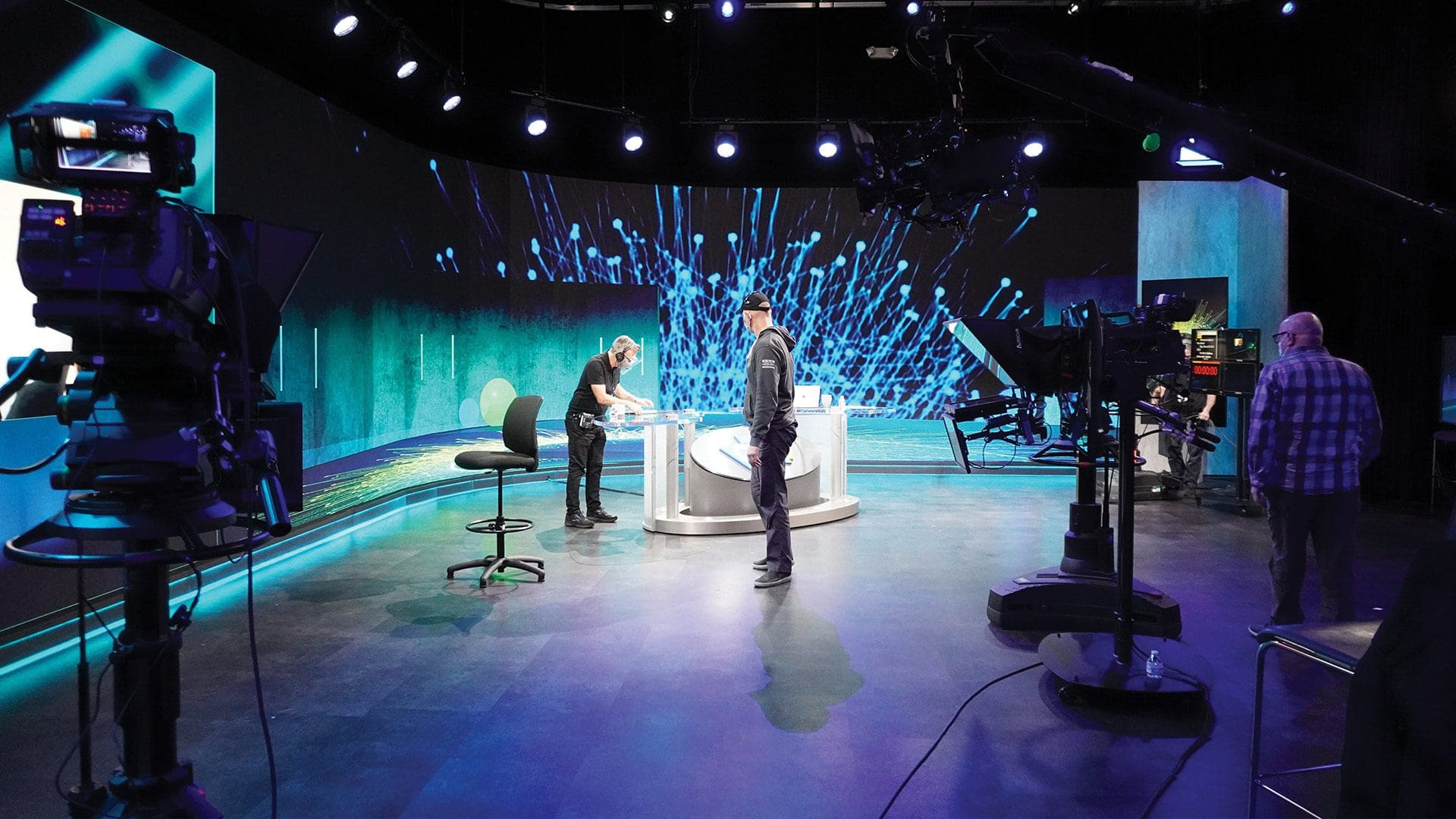CES 2021: The Top Ten Tech Highlights
As COVID-19 and the state of the world made it difficult to have the expo at the Las Vegas Convention Centre, the CES 2021 went digital, streaming across the world and totalling the turn-out to a reported 80,746 industry attendees. With 100-plus hours of conference programming, the keynote views got to over a staggering three million, a number not achieved in CES history.
The big trends this year featured ways for customers to cope with the worldwide pandemic with high-tech masks, air purifiers, UV-lights to kill germs and many more. That was to be expected, judging by the times we’re living in. 5G was everywhere too. Where there are so many cool, state of the art toys and gadgets to play around with, there needs to be the data to power them. 5G is very much taking over our lives, as mentioned by Verizon CEO and keynote speaker, Hans Vestberg in a conference he gave this year. Samsung, with its plethora of innovative products, introduced a 5G-based telematics control unit that uses features from a beamforming network, to heighten connectivity used in cars. Other big trends like rollable phones and an innovative approach to concept vehicles raised their heads too.
M2 came up with a list of what we thought were the coolest gadgets to come out of CES this year.
Roll With It
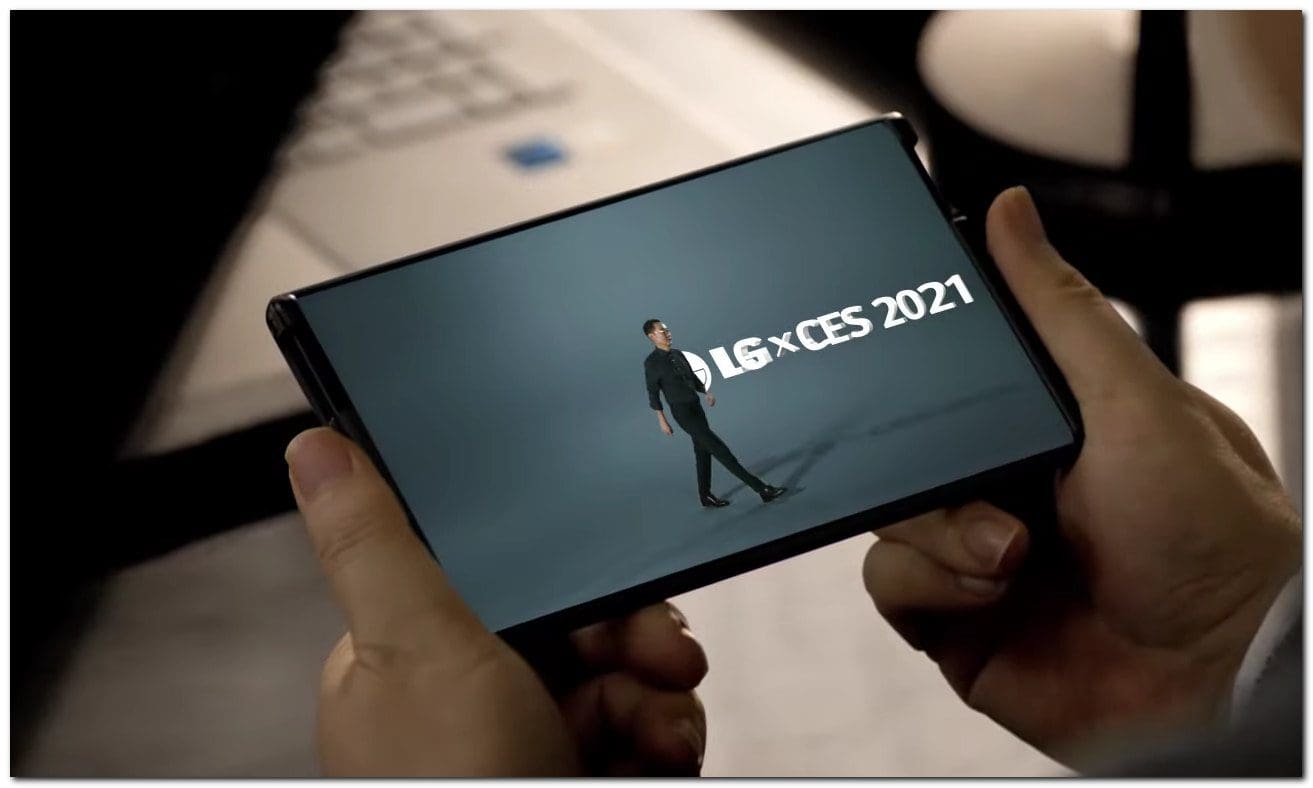
Two years ago at the CES 2019, Chinese company Royole FlexPai released the first foldable smartphone into the world, giving tech-enthusiasts an exciting look into technology’s future with the HTC Hive or the original iPhone. From foldables to flips, manufacturers have been trying their hardest to better each other with different styles and models. Take Samsung’s Galaxy Z, for example, which impressed from every single angle.
LG just went that one step further and released the world’s first rollable phone. On day one of CES 2021, the Korean tech giant excitedly teased their next step in tech domination with its rollable device, the LG Rollable. In the early hours, LG gave a brief glimpse for their latest phone that has a display that extends upward to create a large tablet-like screen. The Rollable appeared in two videos bookending the press conference, and then was revealed to the eager audiences.
The LG Rollable will include a 6.8-inch screen that will be able to extend to a tablet form and include a 16GB RAM, Qualcomm Snapdragon 888 processor, and a 4200mAh battery. Orders are hoping to be out later in the year! Roll them out, LG!
Razer Project Hazel

Singaporean-American multinational, Razer has impressed with their crazy designs for gamer products for years. The high-end consumer electronics company has dished out a raft of impressive gadgets, such as creating the first dedicated gamers mouse, the first ‘pro’ mouse and the best gaming laptop and phone, according to their legion of followers. The high-end company is so popular, in fact, fans have even got tattoos of its logo.
“Razer acknowledges the uncertainty in the road ahead, and so it was our duty to help protect our community members and prepare them from invisible threats,” said Min-Liang Tan, co-founder and CEO of Razer. “The Project Hazel smart mask concept is intended to be functional, yet comfortable and useful for interacting with the world, while maintaining a sociable aesthetic.”
As well as revealing its bonkers Brooklyn concept gaming chair, with its rollout 60 inch display, at this year’s CES, Razer also has developed a conceptual design for a clear plastic face mask, complete with built-in sound system and light display. From a company that regularly caters to gamers, it’s this design that’s really making the headlines as one of the biggest surprises at CES this year, being dubbed by bloggers online as the “most intelligent mask ever created.” With COVID still raging around the world, the product sheds light on the need to improve social interaction in the midst of the pandemic.
Called Project Hazel, the clear face-mask, created from a strong and transparent silicon guard, will be used around the mouth so, whilst talking, others can read facial expressions (or lips, for those hard of hearing). For starters, the masks are going to be waterproof, scratch-resistant and made from recyclable products, harking to that sustainable narrative big tech companies are reaching towards.
Built-in lights will turn on automatically in low-light conditions to make the wearer easily seen in the dark and to add a cool ambience to the wearable product. Included in the mask is the N95 Surgical Respirator, filtering out 95 percent of particles whilst protecting the piece from splashes.
Filters on the mask can be swapped out to maintain its Bacterial Filtration Efficency through the ventilators powered for all-day use. With its built-in mic and amp combo and Razer’s patent-pending tech, it’ll amplify the voice of the wearer so their voice won’t be muffled behind the mask when talking. It even will come with a UV-lit charging port that will sterilise the mask when charging.
As this is only a concept design at the moment, the big tech companies are certainly harking to something on the world stage, and that’s a positive outlook nowadays with the whole world shut down to a pandemic.
Mercedes-Benz Hyperscreen
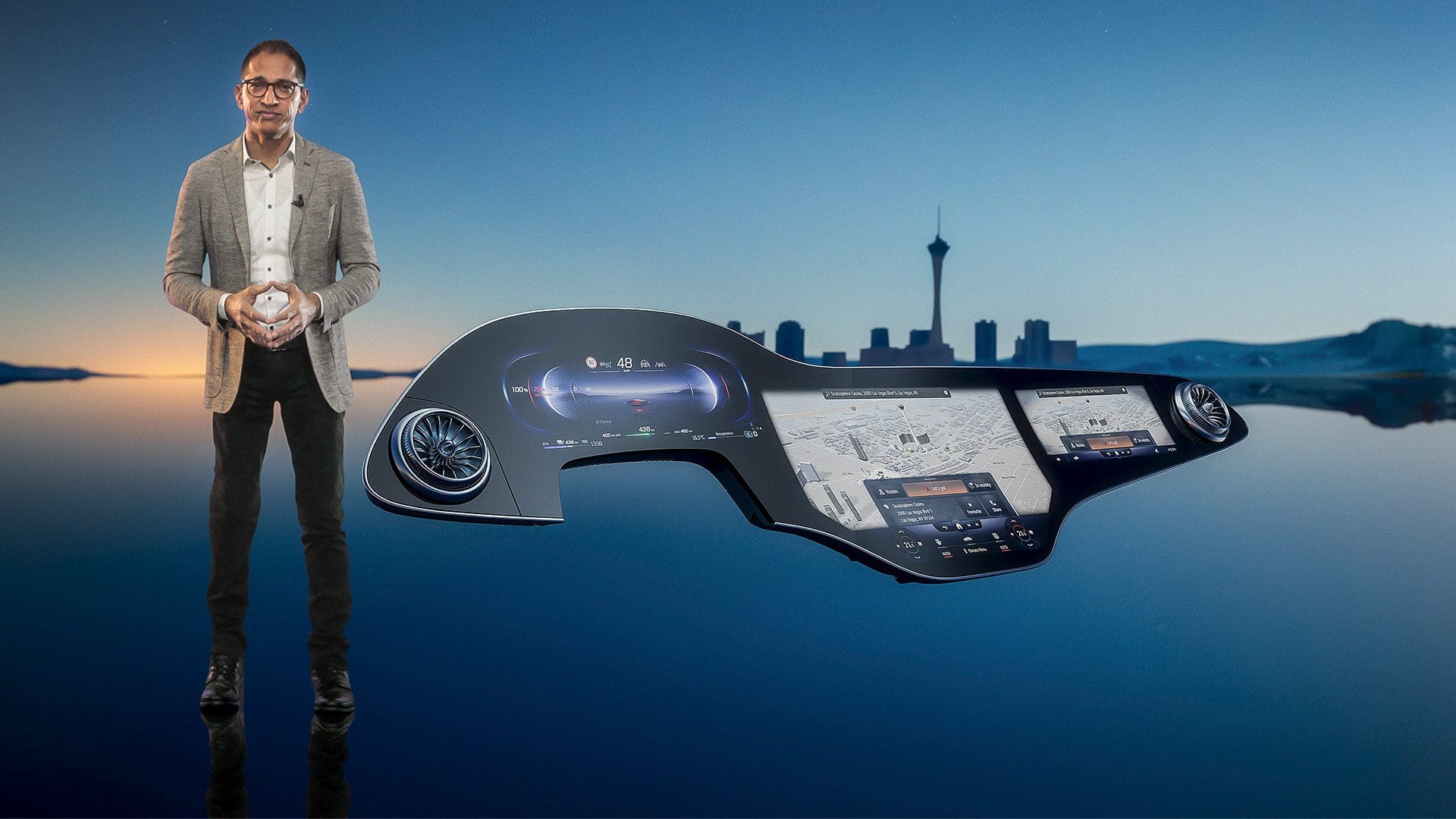
At CES this year, the German marque car manufacturer, Mercedes-Benz, unveiled the coolest accessory ever, a 56 inch screen unit that features three merged display units. Set to debut in the upcoming EQS luxury electric sedan, using state of the art tech, it’s aesthetically stunning, full-to-the-brim with AI and very adaptable to the user.
Called the MBUX Hyperscreen, it will stretch almost the entire length of the automobile and taps into emotional intelligence to evaluate and produce human data through observation. In Layman’s terms, the passenger can ask it questions and the display will answer with its unique voice.
With the Hyperscreen, Mercedes-Benz has developed a new user system called Zero Layer which lets the information sit on the display without the driver even entering it using AI technology. Behind the glass, the MBUX Hyperscreen includes eight CPU cores, 24 GB of RAM and 46.4 GB/s of RAM memory bandwidth. Twelve actuators provide haptic feedback and a sensor set handles gesture control. The Digital Cockpit is a huge leap in modern cars and is taking it up a notch to incorporate the most extensive human-machine interface on the market today.
“With our MBUX Hyperscreen, a design vision becomes reality,” says Gorden Wagener, Chief Design Officer Daimler Group. “We merge technology with design in a fascinating way that offers the customer unprecedented ease of use. We love simplicity, we have reached a new level of MBUX.”
Samsung Bot Handy
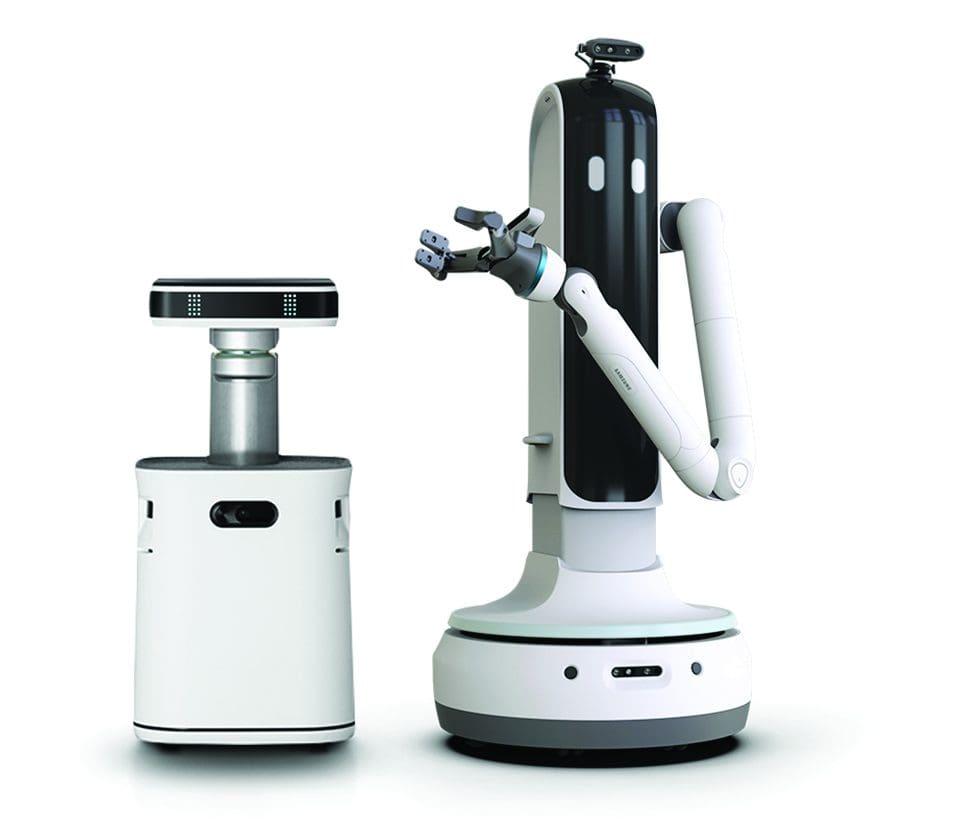
With all the hot tech making tracks at CES this year, it wouldn’t be morally right if there wasn’t a robot to welcome the future in with. One of Samsung’s creations, along with their impressive offering of other new products, featured not one but two of these high-tech AI-buddies.
The first on the list is Samsung’s Bot Care which is both a robotic assistant and companion, designed to use AI to respond to human behaviour. Using Samsung’s high-end technology, the robot learns the details, schedule and habits of the users life and helps them through their day. With built-in wheels and a circular head, the Bot Care has a digital screen, letting the user interact with it as well as video call other people.
The second robot also in development is the Samsung Bot Handy, which will rely heavily on advanced AI to recognise separate objects on the floor and pick them up, becoming an extension of the user and helping them, just as the Bot Care does, with regular day to day life. A handy little trick that the Bot Handy will be able to do is tell the difference between the build of various objects to calculate the force to grab and move household items and objects. Through this AI technology, it will be able to assist with separate household chores and sort out messy dishes after a meal.
Other Samsung products unveiled included an adjustable four-door refrigerator; a 110-inch LED television with a four-way viewing option and no bezels; a 4K laser projector called ‘The Premiere’; a meal-planning service, and a ‘Smart Trainer’ integrated into new Samsung televisions.
While these products are still in the developmental phase and will not be hitting the market for a while, from what we have been seeing at CES so far over the years, everything is possible with high-end tech!
Ubtech’s Disinfecting Adibot
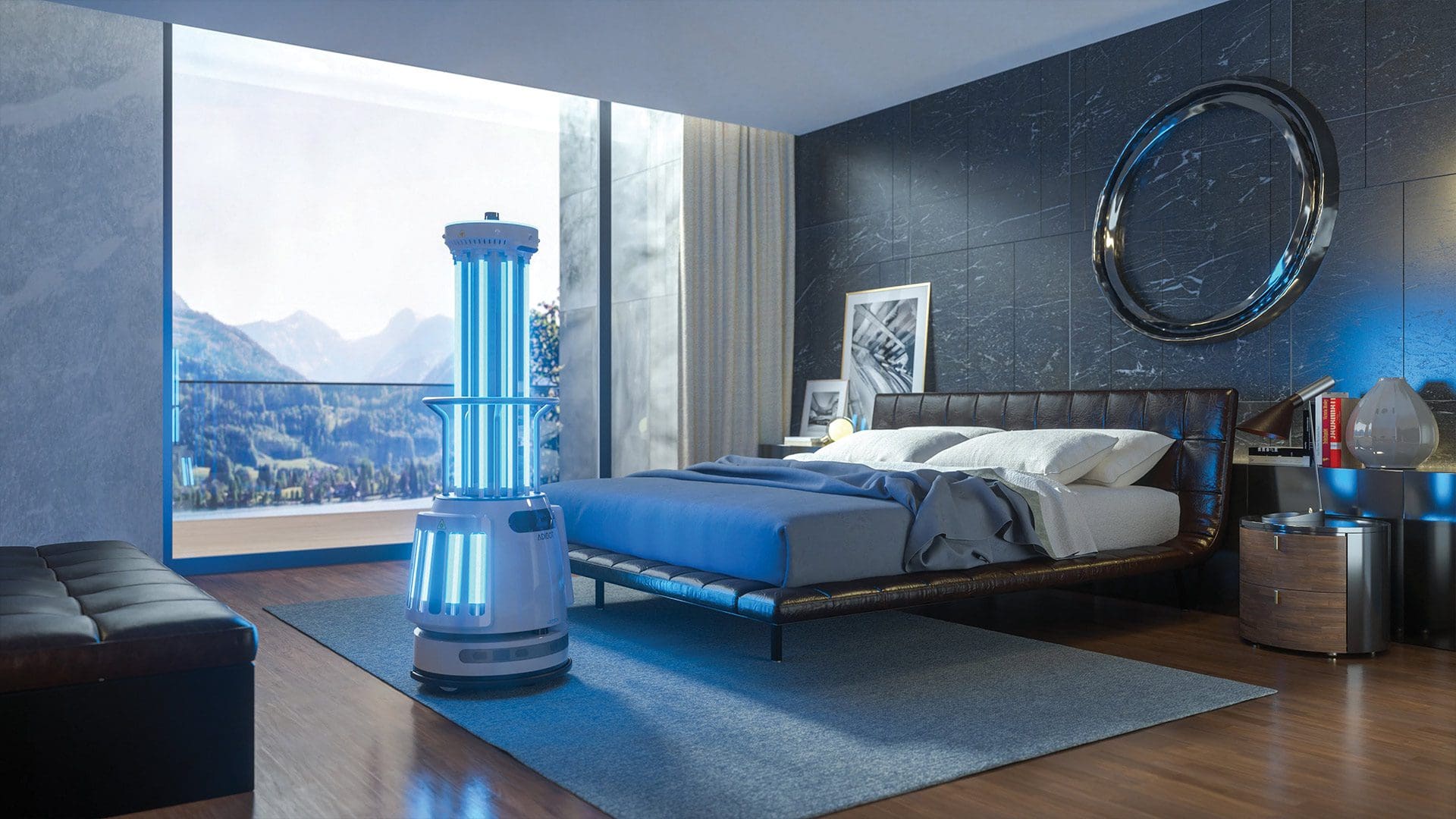
AI experts, Ubtech Robotics launched their Adibot UV-C Disinfecting Robot at the CES this year and it is very impressive. Designed to provide hospital-grade protection against the COVID-19 germs, the robot uses robotics and AI from Ubtech with UV-C technology to disinfect surfaces and the surrounding air.
“Ubtech’s mission is, and continues to be, to make everyday life easier for people now and into the future. As a result, we’re addressing today’s challenges with tomorrow’s technology,” said John Rhee, senior vice president and general manager of Ubtech at CES. “This year’s CES offerings not only look to the future of robotics with our AMR and JIMU GO offerings, but also focus on immediate and critical needs. Our ADIBOT UV-C Robots stand to accelerate the safe reopening of schools and businesses shut down by COVID-19, while helping better prepare for potential future outbreaks—from pandemic level down to more localised, harmful viruses.”
Available in stationary and autonomous, the Adibot-S is designed to be manually wheeled from room to room and is already for sale from their website for USD$20,000. The alternative model, the Adibot-A, can pilot autonomously using a Lidar sensor.
So how do these robots work, you may be wondering? The eight lamps send bright UV light in every direction, disinfecting everything within view. A blue status light sits on the top to show if the machine reads movement in the room. Both Adibots use an app and a remote control that will start and stop the cleaning.
Both models look very impressive and the tech behind it is mind-blowing. With stock sprinting off the shelves even before CES, this piece of equipment may just be the key for businesses for that extra peace of mind.
Suit-up!

As VR and AR games sweep the world with a new, unique way to new modern gaming, there is always something that stands out as truly unique and down-right awesome. Receiving a 2021 Honoree award in the CES 2021, the TactSuit X40 is the next stage for all visual and augmented reality gamers.
From Korean-based bHaptics, the suit provides tactile feedback with 40 individually controllable vibro-tactile motors as haptic feedback is becoming the new norm. What is haptic feedback? Haptic feedback is the use of touch to communicate with users. As well as its predecessor, the TactSuit X16, the TactSuit 40 will give the wearer unstoppable move ability with gameplay.
The TactSuit X40 features charging speed of up to five hours with a BatteryLi-ion rechargeable battery which sets the suit up to 18 hours of charge. The suits can be bought now on their website right now!
Move Aside, Jetsons!

As well as the greatest tech in the market today, CES offered unconventional ideas in the trend of transportation. The coolest Formula 1 race car concept was unveiled as a hydrogen-powered flying concept called the Carcopter. The brain-child of ex-fighter pilot, Thierry de Boisvilliers and former Airbus exec Michael Krollack, the first ever manned flying Formula 1 car will be hitting the speed circuit at the end of the year hopefully, and car enthusiasts can’t wait.
French aviation startup, MACA, built the original prototype to show off at the event, equipped with hydrogen fuel-cell motors, making the car capable of getting up to 246.2km/h.
The model shown at the CES was a little different to what the final product will look like. It measured two metres and was powered by six 35kW electric engines. The final Carcopter will weigh much more and span around four metres from the nose to the engine at the back. It will also feature a semi-automatic piloting mode for added safety.
State Of The Art Holograms

Here at M2, we go nuts over anything Star Wars-related, so when we heard that the franchise was the inspiration for one of CES’ most awesome success stories, there was a buzz of excitement. Inspired by the scene from ‘A New Hope’ where R2-D2 projects a holographic broadcast of Princess Leia to Obi-Wan Kenobi, San Diego-based Taylor Scott got an idea and IKIN, a company that he founded, is trying to make fantasy a reality.
During CES 2021, Scott met up with potential investors to make the dream a reality, by combining the latest smartphone technology with state-of-the-art 3D holograms. By using a specialised chemical polymer lens, holograms can be used beside the smartphone at any time of day.
IKIN will create holographic content for smartphones that can have life changing impact. Set to release at the end of the year, the product, called the RYZ, will use onboard AI to customise the user’s experience. They are developing new tech to release a device that will display bigger holograms and the company has already raised over $13 million for the cause.
All In The Eyes

You know what they say: the eyes say it all. Especially when it comes to the world’s first augmented reality contact lenses. Saratoga-based invisible computing company, Mojo Vision released at CES the Vision Lens, which projects text, images and video information that overlaps the field of vision. It was so successful at CES in fact, it won the Last Gadget Standing prize!
Mojo Lens fits like any other normal contact lens, and uses motion sensor technology to follow your eyes. It offers information like weather forecasts, restaurant reviews or directions as you drive your car. The product can access all types of information, provide real-time translation and function from a very tiny display function.
Digitalise The Experience

Move aside every other big brand at the CES, Samsung rolled out some serious tech this year and it really didn’t go unnoticed. One of its break-out offers this year was Samsung’s Digital Cockpit. Utilising AI, 5G, transport and just downright awesomeness, the Digital Cockpit combines a wide 49-inch OLED display with a massive sound system letting users get fully immersed in their entertainment whilst watching the world from their autonomous driving vehicle.
The stand-out element of this is definitely the numerous screens and displays that are customised to the users experience. 5G is used in this model to offer unchangeable user experience. A new installed service named Automotive Samsung Health analyses a passengers health before boarding and regularly monitors stress levels and will adjust the music, lighting, scent and sound in order to accommodate them to relax.

